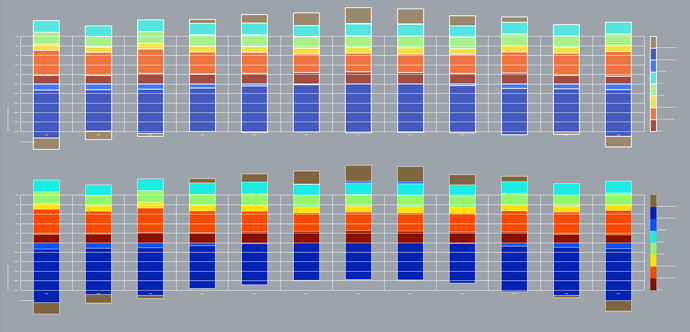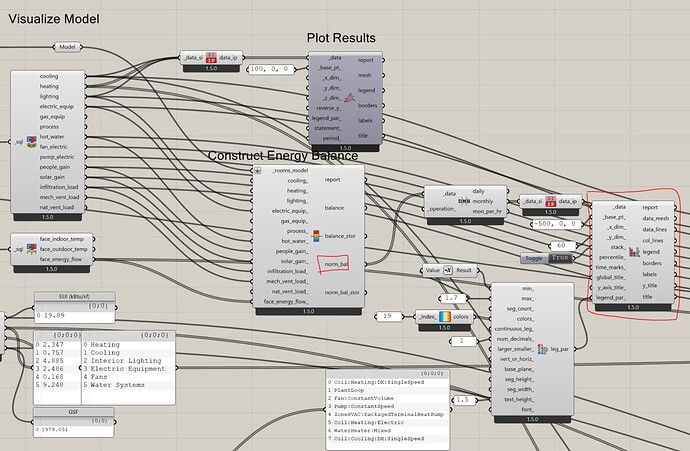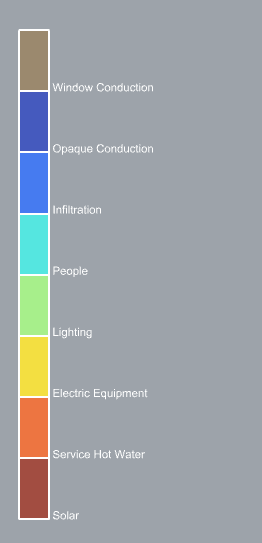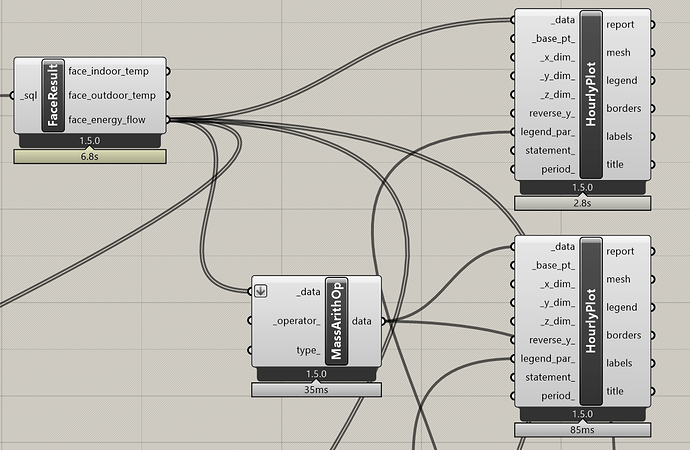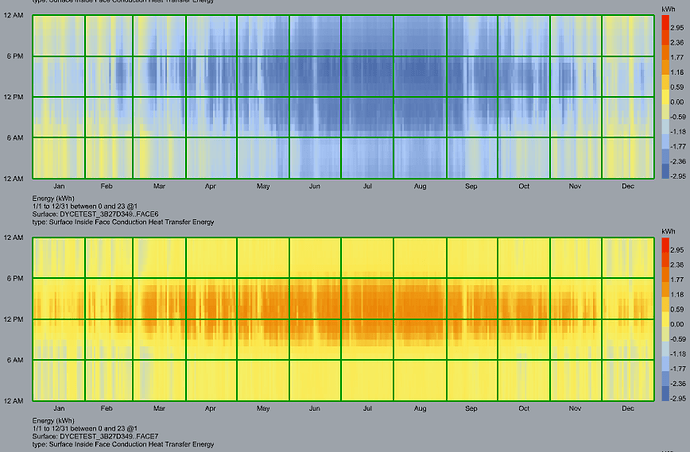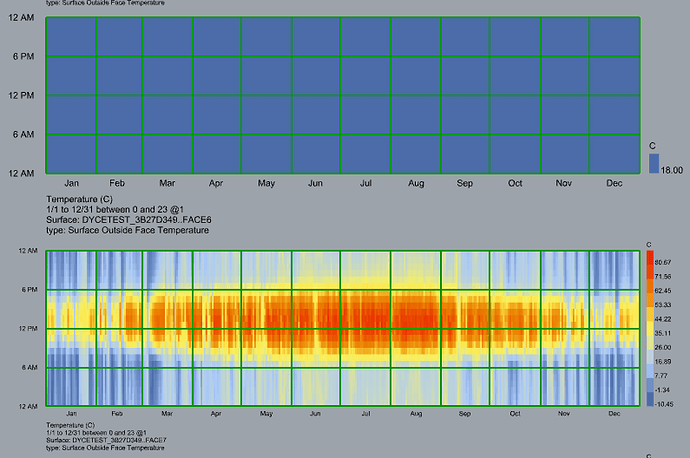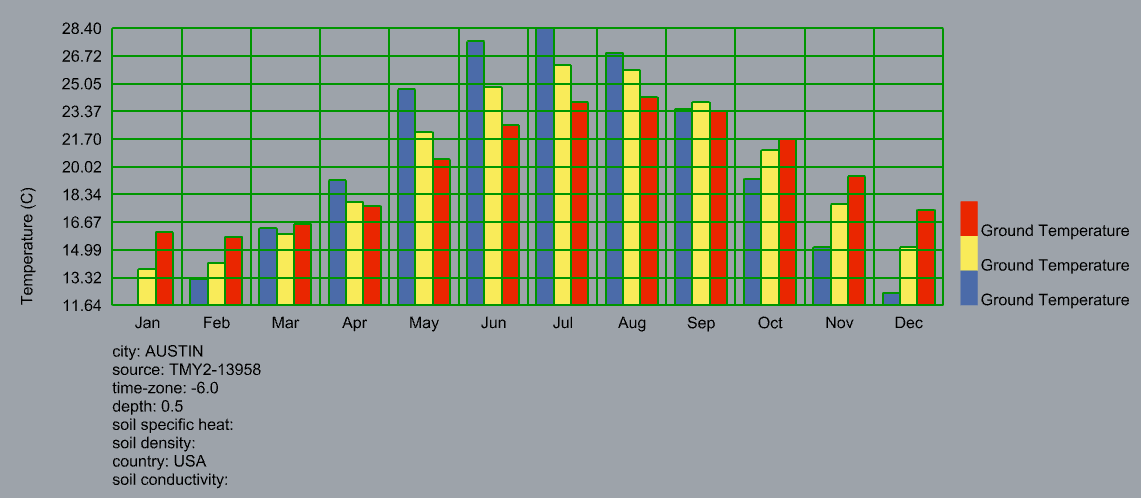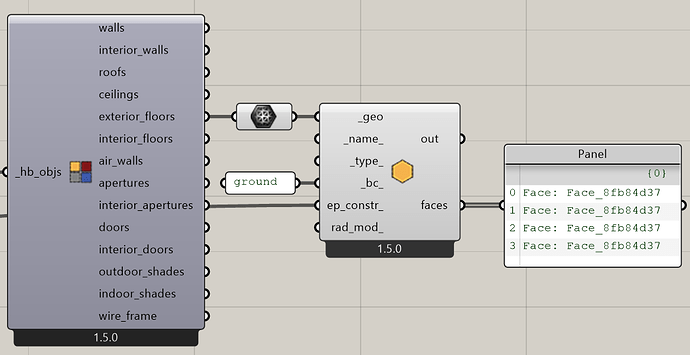Hi @Yure, thanks for sending across your model and script in a private message.
As far as I can see the results are “correct” as far as there’s no bugs happening in the LBT code.
Getting into the details of the results was a bit tricky due to the way LBT and E+ combined handle solar gain and external conduction (face_energy_flow includes solar gain, which LoadBalance then separates out into another variable).
Visualising the face_energy_flow like this
And setting the legend parameters so that they are consistent for all plots, the summed result for face_energy_flow looks like this - even with this including solar gain, the overall energy flow through the fabric is pretty much never positive (or at least not significantly positive)
Looking at the individual plots the two with significant results are the roof and floor (I checked which face was which using LabelFaces, top is floor bottom is roof). The floor is providing significant cooling, more so than the roof is heating.
The external temperatures of these surfaces look like this
With the adjacent condition of the floor at 18degC consistently and the space consistently above 21.3 (and going up to 24.1, space temps below) this cooling makes sense.
The question is then is the setup giving accurate results…
Ground temperatures from the epw look like this
Modelling ground conditions accurately, and accurately modelling U-values of constructions that touch ground, is something I’ve struggled with and don’t have a good answer on. From my limited knowledge I would either set a varying ground condition, or I would set the ground adjacency to air and apply some degree of U-value adjustment to account for the ground providing some extra degree of insulation
Sorry there’s not a simpler answer!
